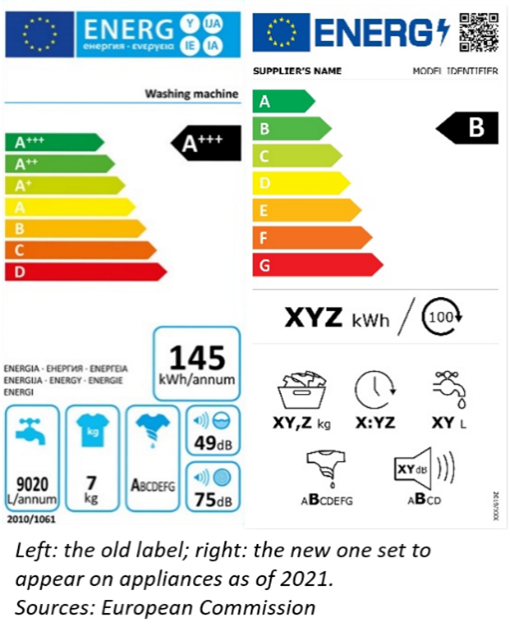Since 1 March, a number of household appliances need to be labelled according to a new scale. The change is, in essence, an update of the previous energy efficiency labelling scheme, which had been tweaked over time but looked a bit like it was lagging behind technological developments. Where until last month, thus, fridges could be awarded a A+++ label, meaning a fridge getting a single A was hardly the most energy efficient on the market, the new scale will go from A to G. Further, the scores themselves have been adjusted to enhance the efficiency requirements.
The remake had been in the cards for quite some time - the Commission had already received a
detailed report in 2014. According to that study, consumers were not really confused by the old scale; however, it did appear that the least attentive consumers were slightly more sensitive to the difference. Since more careful consumers probably rely on their own research rather than (only) on the labels, it could be that the new scale will help assist consumer decisions over all.
While the new rules have been welcomed by consumer organisations, criticism has been raised in respect of the somewhat relaxed timing the new rules follow: only a few appliances will immediately display the new labels, with the transition being due to end in 2025 with boilers.
It is, as ever, not obvious that energy efficiency labelling is a sufficient instrument to lead consumers to make more sustainable choices - beyond achieving some personal savings. In order to boost the effect of these measures and their implementation, it may be worth mentioning that BEUC and other organisations have an ongoing project aimed at communicating not only with consumers but also with other stakeholders.
